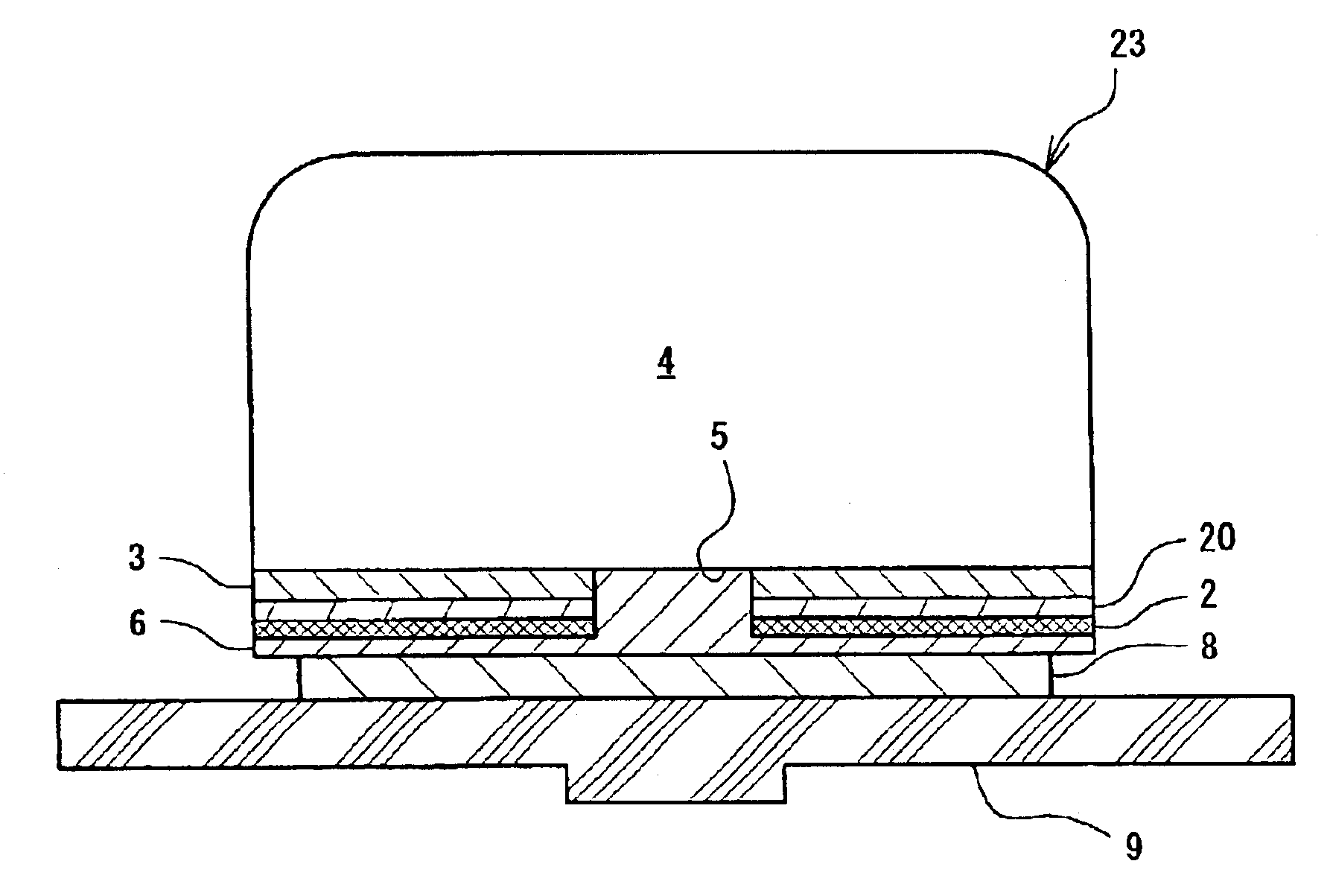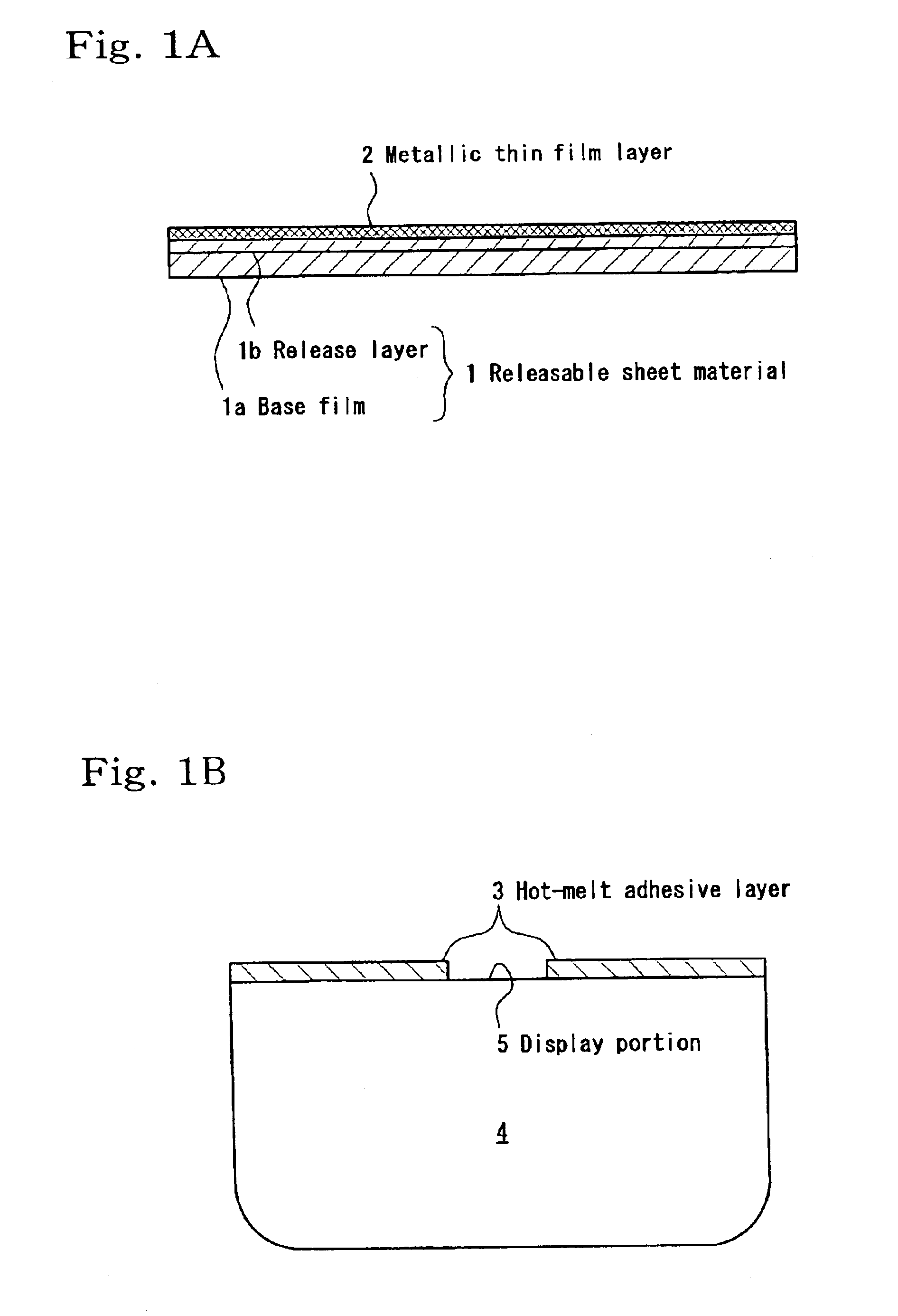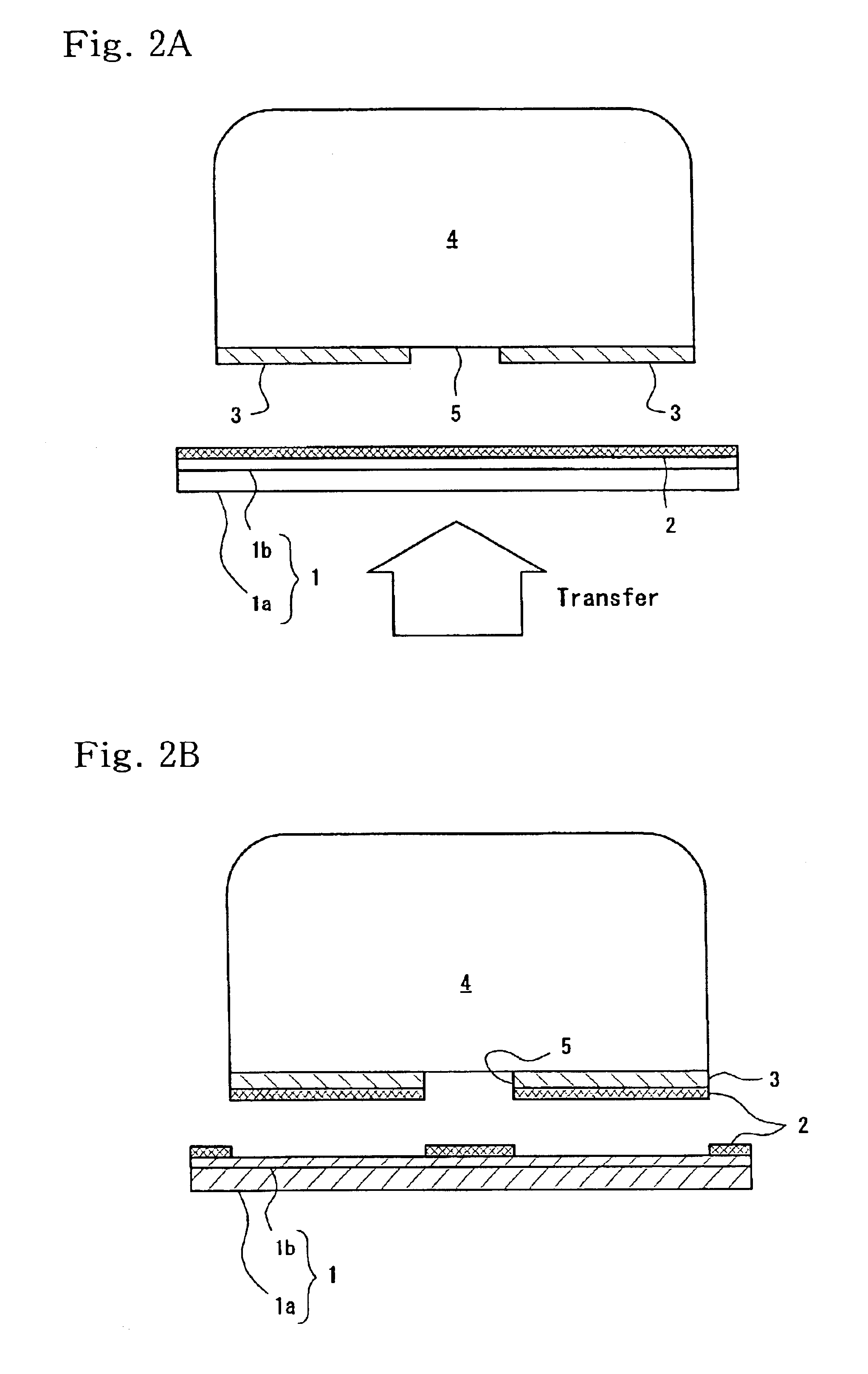Method of manufacturing a key top for a push-button switch
- Summary
- Abstract
- Description
- Claims
- Application Information
AI Technical Summary
Benefits of technology
Problems solved by technology
Method used
Image
Examples
example 1
[0061]Example 1 of the invention corresponds to a method of manufacturing a push-button switch key top 7 shown in FIGS. 1A to 3B. That is, a release layer 1b is first formed on a polyester-based base film 1a having a thickness of 16 μm. Then, an aluminum thin film layer 2 is formed by vacuum deposition on the release layer 1b to have a layer thickness of 30 nm and a visible light transmission of 20% to 35% such that the aluminum thin film layer 2 has both a metal-like luster and illuminance (transparency) as a metallic thin film layer 2. Note that the visible light transmission in this example is measured by using a UV-visible spectrophotometer (UV-1600 manufactured by Shimadzu Corporation) and is a transmission read with respect to a wavelength (520 nm) of an LED that is generally used as a backlight light source of electronic equipment such as a mobile telephone. On the other hand, on the rear surface of a polycarbonate resin key top 4 that is formed by molding, a transparent acry...
example 2
[0062]Example 2 of the invention corresponds to a method of manufacturing the push-button switch key top 7 shown in FIGS. 1A to 3B. That is, a release layer 1b is first formed on a polyester-based base film 1a having a thickness of 16 μm Then, an aluminum thin film layer 2 is formed by vacuum deposition on the release layer 1b so as to have a layer thickness of 200 nm and a visible light transmission of 0% so that the aluminum thin film layer 2 has both a metal-like luster and illuminance (transparency) as a metallic thin film layer 2. Note that the visible light transmission is the transmission obtained by the same measurement method as used in Example 1 described above. On the other hand, on the rear surface of a polycarbonate resin key top 4 that is formed by molding, a red transparent acrylic-based hot-melt adhesive is coated in a die-cut shape corresponding to a display portion 5 to form a hot-melt adhesive layer 3. Next, the aluminum thin film layer 2 is transferred onto the r...
example 3
[0063]Example 3 of the invention corresponds to a method of manufacturing a push-button switch key top 14 shown in FIG. 4. That is, a release layer 1b is first formed on a polyester-based base film 1a having a thickness of 25 μm. Then, a chrome thin film layer 12 is formed by vacuum deposition on the release layer 1b so as to have a layer thickness of 20 nm and a visible light transmission of 18% to 37% such that the chrome thin film layer 12 has both a metal-like luster and illuminance (transparency) as a metallic thin film layer 12. Note that the visible light transmission is the transmission obtained by the same measurement method as used in Example 1 described above.
[0064]On the other hand, on a polycarbonate resin key top 4 that is formed by molding, a transparent acrylic-based hot-melt adhesive is coated in the same shape as a display portion 5 to form a hot-melt adhesive layer 11. Next, the chrome thin film layer 12 is transferred through the hot-melt adhesive layer 11 having...
PUM
| Property | Measurement | Unit |
|---|---|---|
| Fraction | aaaaa | aaaaa |
| Fraction | aaaaa | aaaaa |
| Thickness | aaaaa | aaaaa |
Abstract
Description
Claims
Application Information
 Login to View More
Login to View More - R&D
- Intellectual Property
- Life Sciences
- Materials
- Tech Scout
- Unparalleled Data Quality
- Higher Quality Content
- 60% Fewer Hallucinations
Browse by: Latest US Patents, China's latest patents, Technical Efficacy Thesaurus, Application Domain, Technology Topic, Popular Technical Reports.
© 2025 PatSnap. All rights reserved.Legal|Privacy policy|Modern Slavery Act Transparency Statement|Sitemap|About US| Contact US: help@patsnap.com



